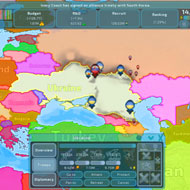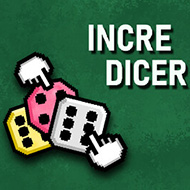
Leaf it Alone transforms minimal interaction into an intricate meditation on momentum and observation. The player’s task is simple: keep a fragile leaf afloat while navigating layers of shifting air currents and unpredictable environments. Yet beneath its calm surface, the experience hides a demanding exercise in timing, resource awareness, and precision control. Every small gust becomes both obstacle and opportunity.
The Living System of Air and Motion
Each region within Leaf it Alone behaves as its own atmospheric ecosystem. Forest stages rely on horizontal breezes and soft descents, while canyon areas introduce vertical thrusts that lift the leaf at erratic intervals. To move effectively, players must interpret invisible forces. The world doesn’t guide you; it reacts to your rhythm. As mastery develops, play becomes less about steering and more about anticipating natural flow.
- Observe debris movement to predict upcoming wind changes.
- Allow natural drag to slow descent instead of forcing correction.
- Study rhythm patterns between gusts to sequence long flights.
- Adjust altitude before environmental shifts for controlled transitions.
Environmental Layers and Adaptive Learning
Progress introduces deeper complexity: volcanic drafts that oscillate, urban areas with mechanical fans, and bioluminescent caves where air behaves differently under heat. Learning how each biome manipulates air pressure becomes essential to survival. Players adapt not through trial and error alone but by integrating patterns into subconscious control — a skill that feels more organic than mechanical.
- Use walls to bounce airflow into helpful angles.
- Time pauses to coincide with calm atmospheric moments.
- Recognize visual signals like leaf tremors before strong currents.
- Navigate hidden tunnels to bypass turbulence zones.
Mastering the Art of Stillness
One of Leaf it Alone’s quiet lessons is restraint. Moving constantly drains position accuracy, while stillness creates control. Holding a steady posture amid chaos turns the environment into a partner rather than an enemy. The satisfaction comes from harmony — the realization that the less force you use, the more effectively the world responds.
- Hover in neutral space to reset trajectory awareness.
- Refrain from overcompensating after heavy winds.
- Focus on maintaining consistent spin to reduce instability.
- Rely on natural rhythm instead of reaction-based control.
Balance as Reward
By its final moments, Leaf it Alone ceases to feel like a task and becomes a dialogue with motion itself. It challenges coordination not through obstacles but through mindfulness. Each stage rewards patience, foresight, and the willingness to trust invisible systems — a journey where every small correction tells a larger story about balance.






























